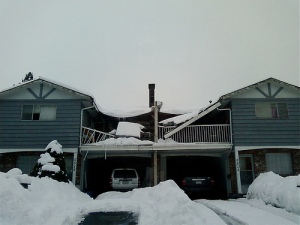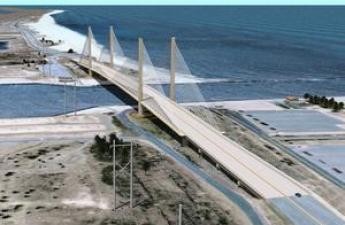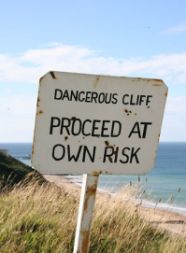 Following on last week’s story about green roofs, including one which collapsed under a weight of snow and ice, engineers speaking to the ENR have stated that Codes are adequate, but that they may need to be adjusted in certain situations:
Following on last week’s story about green roofs, including one which collapsed under a weight of snow and ice, engineers speaking to the ENR have stated that Codes are adequate, but that they may need to be adjusted in certain situations:
[E]ngineer sources for this article say existing building codes are adequate if designers allow for a factor of safety. But Levy [Matthys Levy, chairman emeritus at Manhattan-based Weidlinger Associates] recommends designers make proper allowances for snow accumulation such as when designing roof structures near parapet walls, especially those that are four feet or higher.
* * *
Multi-level roofs with steps instead of roof flashing can also be problematic with snow accumulation on a first-story portion, for instance, piling up against the second story, Levy says. “It’s best to avoid stepped designs unless you design for them,” he says. While an average of 40 psf may be adequate for designing most of a roof, designers should allow 60 psf to 80 psf for the parapet wall, he says. And mountainous regions may require twice as much strength, he says.
Garrick Goldenberg, professor of structural engineering at Wentworth Institute of Technology in Boston and chief structural engineer at Chappel Engineering Associates in Marlboro, Mass., said that while state building codes address snow drifts with requirements for the shape and slope of a roof, this year’s record snowfalls and ice accumulation with little thawing has led to a greater number of collapses. In sampling snow at Chappel Engineering in early February, Goldenberg says his group found that even two feet of freshly fallen snow or more totaling 16 to 20 lb/sf was not a danger to buildings. On average, people assume fresh fallen snow produces eight pounds of pressure on a roof per square foot.
However, invisible loads caused by accumulation of ice have been a serious problem since ice weighs 7.5 to 8 times more per cu ft than snow. “In many cases, even before reaching two-foot snow loads, we were in excess of 30 pounds because of the ice,” he claims.
For more, go to the ENR full story: Ice, Snow Take Toll on Northeast Roofs, But Engineers Say Codes Are Adequate.
What are your thoughts about current Codes, in light of the many collapses in the Northeast and Midwest? Legally, does designing to Code, but failing to take into account likely weather events, make your design deficient? I’ll post some of my thoughts in a subsequent post, but share yours below.
—————————-
Photo: “Deck roof collapse” by Derek K. Miller via Creative Commons license/Flickr



